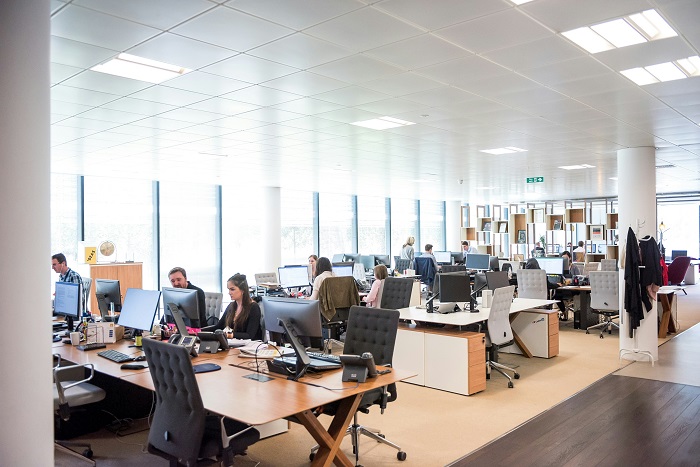Businesses of all kinds face the challenge of data and system protection against cyber threats in the digitally driven environment today. Powerful cybersecurity is the key issue nowadays, given amazing attack development. One of the more vital decisions companies need to make regarding cybersecurity is whether to depend on their internal Information Technology help or managed IT services. In this post, we will look at the variations between these two strategies and choose which is more suitable for cybersecurity.
What is Managed IT Service?
‘Managed IT’ services run by the third-party provider aim to handle the company’s IT infrastructure. These agencies provide various services, such as network monitoring, data backup and recovery, software updates, and cybersecurity solutions. Managed IT service providers or MSPs can earlier make businesses access a team of experts who have the sole purpose of keeping the IT systems of the business secure and reliable. Managed IT services often include a variety of IT solutions combined and offered through a pay-per-service model, which allows businesses to scale the resources they need. MThese services can be tailored to specific industries, such as IT services for construction, where companies require specialized support for project management software, on-site connectivity, and data security in remote locations.
What is In-House IT Support?
In terms of in-house IT support, this implies that the organization has to perform operational activities that take care of its IT recovery and human resources in the same way. Keeping the company’s IT infrastructure up and running is the main task of these experts. Also, they can help and support employees who find solutions to technical tasks. The in-house IT support has the benefit of direct control and supervision; however, it is also the most expensive and resource-intensive to maintain a skilled IT team in-house. However, the other common challenge facing SMEs is the availability of a competent workforce, especially against the backdrop of a budget shortage.
Which is Better for Cyber Security?
Expertise:
There is also a type of managed IT service provider that delivers cybersecurity expertise, unlike most, with a dedicated department for round-the-clock monitoring and mitigation of cyber threats. Security specialists are a group of professionals who never stop learning about recent security trends and technologies and doggedly follow the best practices in their field, which provides them with a speedy response to new inherent dangers.
Resources:
Basically, the IT MSPs can access the most up-to-date or sophisticated tools available, which can be too costly for small and medium business entities to acquire and install. These technologies can be made up of hardware, software firewalls, intrusion detection systems, and endpoint protection tools which are the basic elements of cyber security. On the other end, internal IT departments could get stuck by financial limitations and this means that they may not be able to get the most recent cyber security devices.
Response Time:
Your weaknesses are the vulnerabilities to cyber-attacks or hacking, and you must take action to mitigate this risk and secure the information under your care. Managed IT service providers are always happy to provide security monitoring and support to clients 24/7 and with almost immediate reaction to security incidents. Contrary to this is the in-house IT teams that work based on the availability of the staff and the workload which therefore causes delays in responding to the incidents.
Cost:
The main factor still afforded to businesses in trying to find the answers to cybersecurity options is calculating the cost value of the companies. On the other hand, the difference between maintaining an in-house IT team and managing IT services is that the latter is paid with a subscription fee. Nevertheless, in the end, they might substantially be price-competitive. Managed IT services are the best way to enable your business to access a pack of professionals at a very low cost compared to hiring and retaining in-house IT staff. In addition to this, managed IT services provide companies with a fixed monthly fee which makes the budgeting process easier and predictable for the enterprises.
5 Tips On How To Find The Right IT Service Provider
Assess Your Needs
Once you have identified your business’s IT requirements and cybersecurity needs, then you can decide who to choose for an IT service provider. Consider, for instance, the size of your organization, the regulatory requirements of your industry, and your budget.
Evaluate Expertise
Seek out a managed IT services company with a verifiable blend of experience and expertise in cybersecurity. Find out if they have experienced staff and check for their certifications too.
Consider Scalability
Go for a provider that can expand their services according to your business’s growth and changing IT needs. Provide for the capability of their cybersecurity solutions to be changed over to fit the changing threats and technologies.
Review Security Measures
Investigate the security specifications and the rules that the managed IT security service provider in place to protect your data and systems. Search for the providers that use encryption, multi-factor authentication, and other sophisticated security technologies.
Seek References
Before making a choice, choose to hear that other businesses reference or have case study examples that have worked with IT service providers. This will allow you to get an idea of their reputation, consistency, and popularity among their customers.
Conclusion
Managed IT services and in-house IT support are both viable options for dealing with cybersecurity issues. With managed IT services, businesses get what they need, including exclusive skills, modern technologies, and around-the-clock support, which is a pretty attractive option for many organizations. In-house IT support, however, carries the benefit of having direct oversight and control, which may be a more convenient option for some firms. Ultimately, the choice between managed IT services and in-house IT support will be based on different factors such as knowledge, resources, response time, and cost. Cybersecurity solutions most suitable for your organization may be figured out by thoroughly investigating your business needs and implementing these variables.




